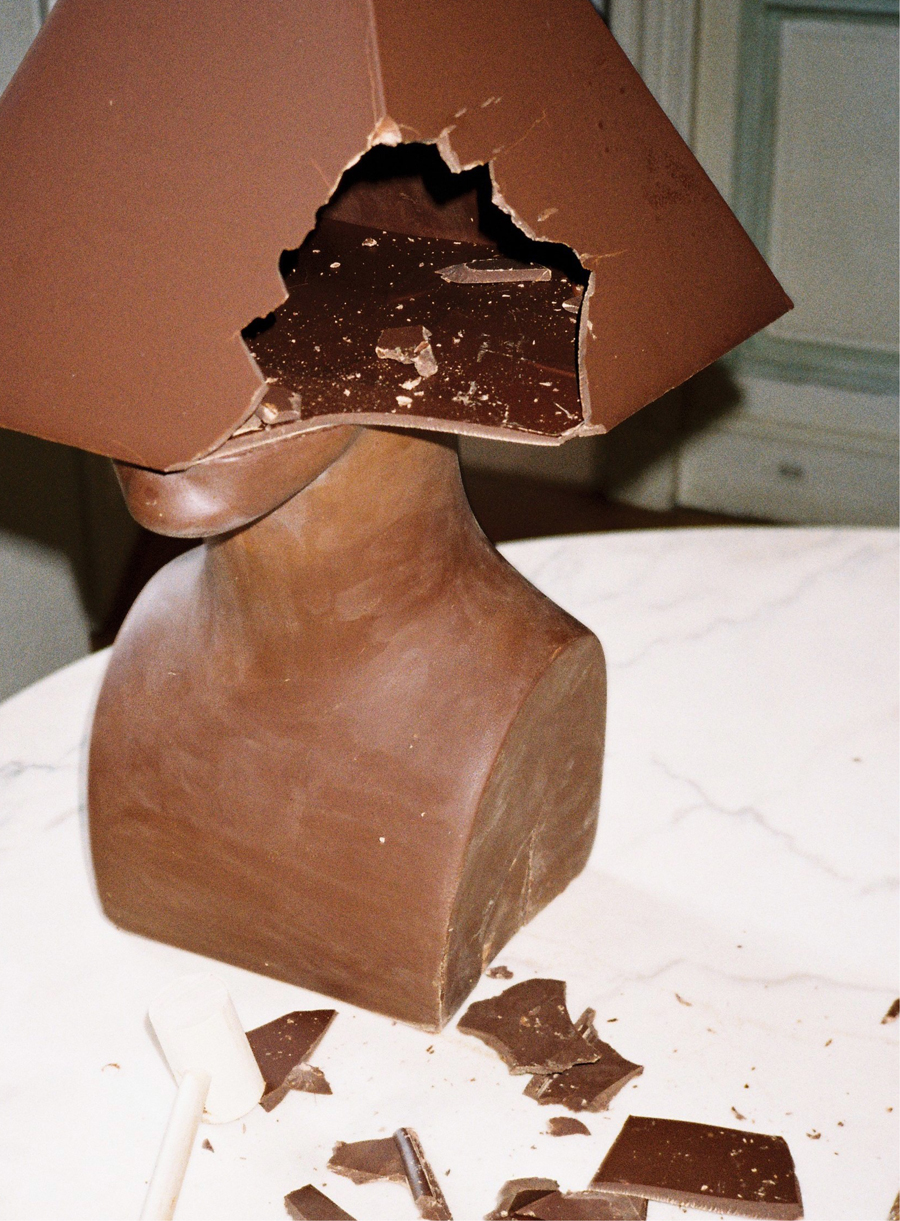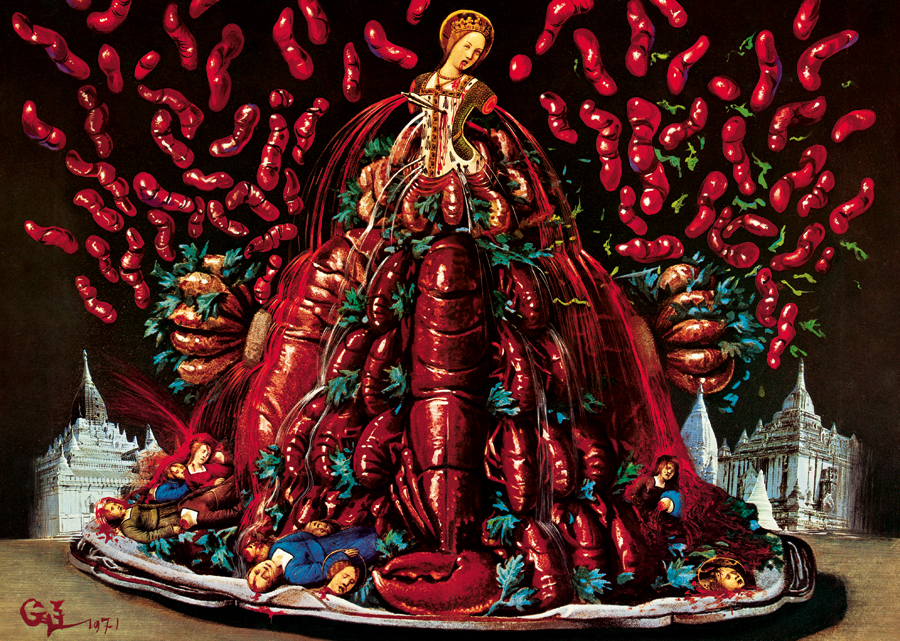A Brief History of Spectacular Dining
From Louis XIV to #foodporn, feasting has always been for the eyes
From Louis XIV to #foodporn, feasting has always been for the eyes

Sugar glass in coruscating bergamot, yuzu and cara cara orange. Dalmatian-spotted sponge cake. A raspberry tart large enough for 2,000 people. In the age of Instagram, these surreal dishes, the creations of Laila Gohar, are delivered to the palm of my hand. The Cairo-born cook – and darling of the art, fashion and design worlds – has created a métier out of conceiving interactive edible installations for innumerable well-heeled international events. Gohar’s visually opulent creations bear more than a passing resemblance to some of the 17th- and 18th-century confections that emerged from the kitchens of Louis XIV. After all, the food-obsessed French royal initiated a period of fascination with presentation: under his reign, food became an art form. Exotic ingredients favoured by the king were imported from neighbouring countries – green peas, for instance, all the rage in his court, arrived packed in roses to keep them fresh. A renowned gourmand, whose stomach was reputed to be three times the size of a typical man’s, he demanded that elaborate 22-course dinners be served to him nightly. Some of these meals were open to the public – not for them to eat but so hundreds of his subjects could file into the dining chamber as ‘The Sun King’ transformed his meal into a performance. Attendees shuffled past him as he devoured lobster aspic and wild duck à la Villeroy, possessed, perhaps, by the same remote desire that drives us to scroll endlessly through feeds of someone else’s culinary inventions. (The mere fact that we call such repositories of images ‘feeds’ is telling.)

Food has, for centuries, sat at the crossroads of function and spectacle. People’s wealth may have dictated how elaborate their diets were but, even in ancient cultures, food had already exceeded the realm of pure sustenance and was frequently deployed in symbolic capacities. Piles of bread, fruit and salted meat were laid upon tombs in ancient Egypt to usher the dead into the afterlife well fed. In 17th-century China, when the Manchu military defeated the Han, Emperor Kangxi of the Qing Dynasty organized the mythic, three-day Manchu Han Imperial Feast, consisting of more than 108 unique dishes – including such rare delicacies as camel hump, bear paw, ape lips, leopard foetus and shark fin.

Gohar – with blooms suspended in her koi-shaped jellies and butter sculpted to resemble ancient Greek fragments – might be peerless in her very idiosyncratic niche, but food art as a social category is overrun. With online photo-sharing now largely migrated from defunct Tumblr blogs to Instagram’s addictive, streamlined reel, food, perhaps more than any other medium, has been denatured, sensationalized and fetishized to the extreme. (Look no further than @breadfaceblog.) The emphasis placed on sharing photogenic product – well-documented, well-lit, well-hashtagged – is at the core of a platform centred around a system of ‘likes’ with an algo- rithm engineered to push out favoured content to users in an uncircumventable hierarchy. The commensurate pressure to generate ‘high-quality’ content or risk invisibility has resulted in professionalization: cue diners in restaurants with colossal camera lenses perched on chairs to get optimal over-head shots of their piles of pancakes. Some restaurants have adapted their fittings and furnishings to amplify the appearance of their offerings, while other food-centric environments have eschewed eating altogether – the wildly popular Museum of Ice Cream, for instance: a confection-themed funhouse architected entirely around the selfie.

In our atomized culture, food constitutes one of the most popular categories on social media. Celebrity chef Jamie Oliver boasts 7.3 million followers on Instagram; Claire Ptak’s photo of the cake she made for Meghan Markle and Prince Harry’s wedding garnered nearly 88,000 likes. Food has always been a social vector: eating is the one thing all living beings have in common. For the most part, humans have honoured the tribal impulse to dine in groups; only in the 20th century did Western inventions such as the ‘TV dinner’ or drive-thru (and fast-food culture, generally) threaten to remove conviviality from the equation altogether. Nothing, however, has more alienated food from its function than digital culture. Food has become a retinal affair and, in this new economy, those who traffic in the aesthetics of food (be they artists, stylists, event planners or even actual cooks) have emerged with more visibility and cultural traction than ever before.

It’s impossible, however, to consider Gohar and those of her ilk in the absence of certain other distinguished predecessors: the artist Gordon Matta-Clark, for instance, who opened his influential New York restaurant FOOD in 1971; or Salvador Dalí, who anthologized the menus from his famous surrealist dinner parties in the cult cookbook Les Dîners de Gala (1973). These artists transformed food into visual-convivial experiments: Matta-Clark famously challenged his diners with dishes such as whole sea bass encased in a giant block of aspic, seeming to wobble upstream in the jelly. Yet, where Dalí and Matta-Clark’s audiences extended only to their respective restaurant or dining-room tables – and to the pages of a book, perhaps – Gohar’s is seemingly limitless. Something ephemeral, comestible, nourishing is experienced in real life by only a very few: online, for better or worse, we’re all at the table.
This article first appeared in frieze issue 205 with the headline ‘#foodporn’.
Main image: Laila Gohar, Offering, 2018. Courtesy: the artist; photograph: Lucy Folk






















